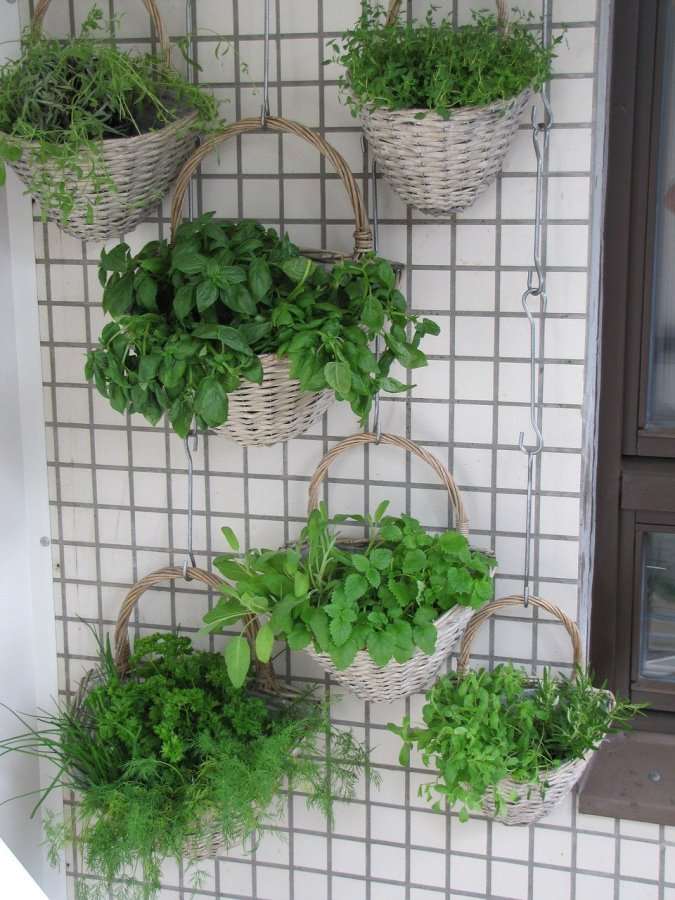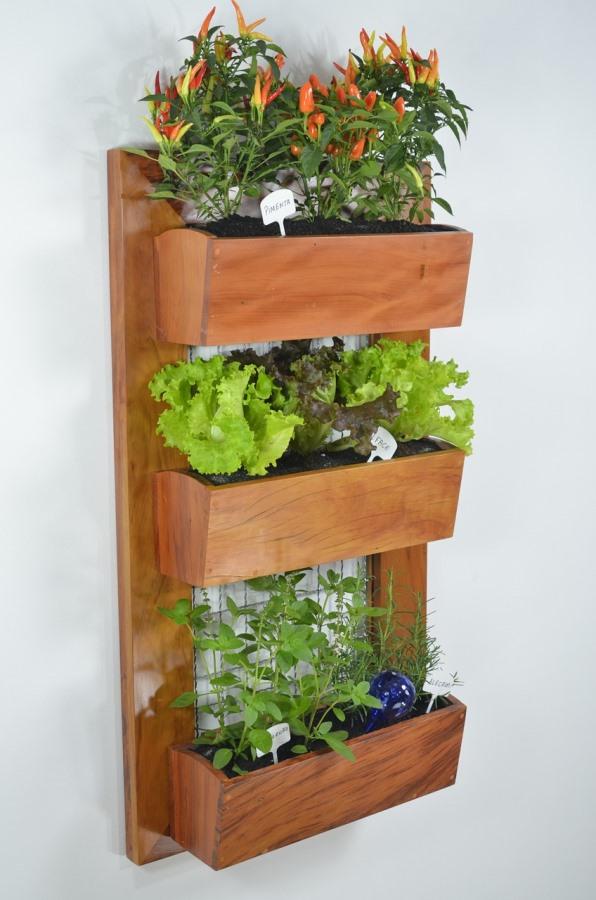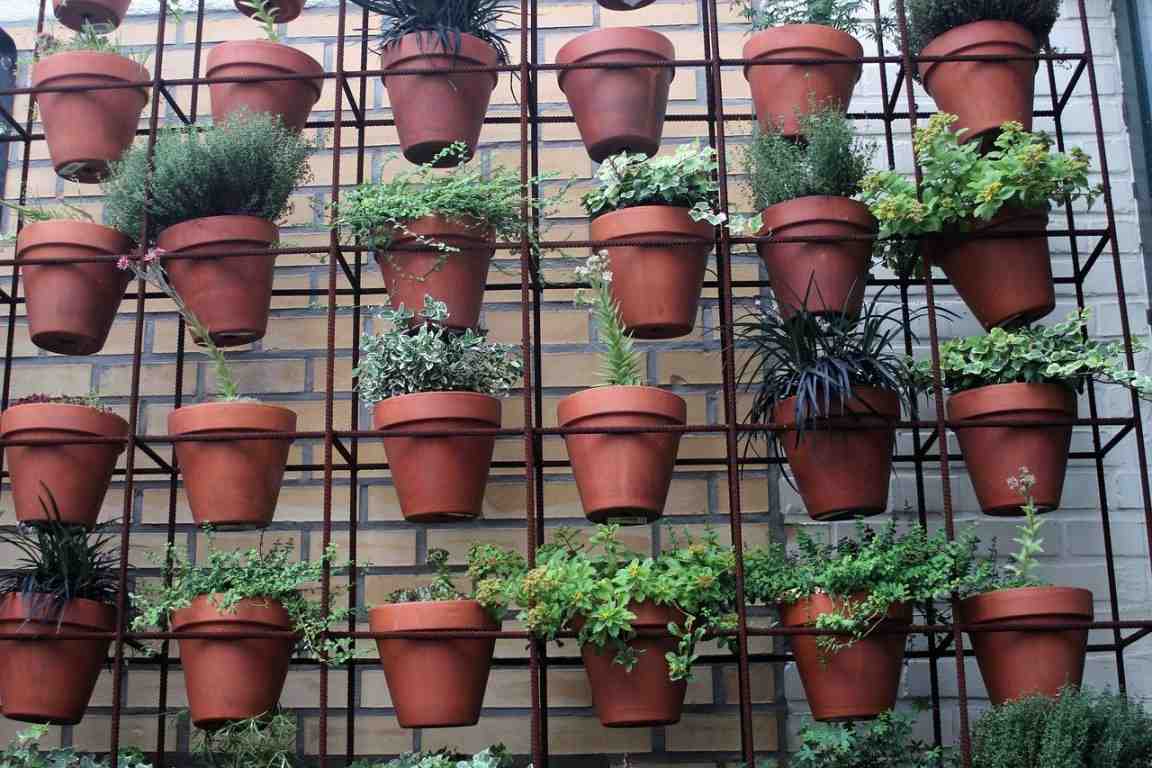Introduction to vertical gardening Frequently Asked Questions (FAQs) – Vertical Gardening is very special and suitable for little spaces, particularly for decorating the walls and roofs in various styles. This is often an alternate method for gardening by expanding the scope of growing plants in a vertical space.
A Guide for Vertical Gardening Frequently Asked Questions
A vertical garden is a simple technique to grow different plants on a vertically suspended panel by using hydroponics or other methods. These unique structures can either be freestanding or even attached to a wall. Vertical gardens are used since ancient civilizations and many modern vertical gardens can last for many years and provides a pop of nature into modern-day business.
Vertical gardens are an exquisite alternative to potted plants within the office space. While potted plants have the advantage of being placed anywhere, they will take up space and need much maintenance. However, with vertical gardens, there’s just one large panel to take care of, and it’ll even provide a lush pop of color to any professional environment. Now let us look into vertical gardening Frequently Asked Questions (FAQs).
What plants can I grow in a vertical garden?
The best edible plants to grow in a vertical garden are given below:
- Tomatoes
- Peppers
- Pole beans
- Peas
- Cucumbers
- Melons
- Squash
- Radishes
What are the advantages of vertical gardening?
Vertical gardens usually help to scale back the carbon footprint of a building by filtering pollutants and carbon dioxide out of the air, which also benefits those living nearby because the quality of the air is easily improved.
How does one make a vertical garden?

To start a vertical garden:
- Choose a wall
- Build a frame
- Attach plastic sheeting
- Attach the material
- Set up the irrigation system
- Add fertilizer injector and fasten irrigation system to a water source
- Choose your plants
- Insert plants
Are vertical gardens is the simplest method to grow plants?
The benefits of vertical gardening are given below: The first and foremost thing: increased yields. Making maximum use of space means a good and heartier harvest. Maintaining and harvesting from a vertical planting is additionally physically easier—plants reach a better level, therefore the got to bend and kneel is minimal.
Do vertical gardens work?
It means growing up, or the other of your normal horizontal system of growing a garden. However, even where you’ve got much space, a vertical garden is often less work and offer greater yields in vegetable growing than traditional gardening. A well-designed trellis or wall also can look stunning.
Can I grow carrots in a vertical garden?
Whether you’ve got a three, four, or five-tier Green Stalk Vertical Garden you can grow a spread of root veggies. A number of our favourite root vegetables to grow are Sweet Potatoes, Onions, Carrots, Beets, Radishes, and Turnips.
What are the advantages and disadvantages of vertical gardening?
Vertical gardens save space, allow you additional mobility, offer you many planting options, and improve your home, among other advantages. The possible disadvantages include additional maintenance and even potential expenses.
Are vertical gardens better?
Yes, Keeping plants up within the vertical space increases airflow and keeps them healthier. Being above the soil can also protect your plants from soil-borne pests and diseases, like fungal and bacterial infections.
Are vertical gardens easy to maintain?
Yes, vertical gardens are generally easier to take care of than a daily garden. Physically, performing at eye level will just be easier than having to bend over. Also, the very fact that the plants are in containers means you will need to devote less time to fighting pests and disease.
Can I grow vegetables in a vertical garden?
In case if you miss this: Cucumber Seed Germination.

Vegetables that are great for vertical gardening are Tomatoes, Cucumbers, Melons, Squash, or Beans are often grown on a vertical system like a trellis. Cucumbers and Melons can take up much space within the garden.
What is often grown vertically?
- Vegetables
- Greens
- Fruits
- Herbs for Sunny Walls
- Medicinal and Aroma-Therapeutic
Why are vertical gardens becoming popular?
Vertical gardens act as natural soundproofing to assist reduce noises by blocking high-frequency sounds. Combine this with the vertical structure’s ability to scale back low-frequency sounds and it is a win-win. Cleaner Rainwater: Rainwater and runoff are often an enormous problem. Vertical gardens usually act as a natural filter for water.
How does one maintain a vertical garden?
Developing a maintenance schedule
- Maintain climbing plants to make sure plant density and proper growth
- Check plants for signs of disease or pests and treat as needed
- Apply plant nutrition like fertilizer
- Check for any effects of wind damage especially it is important for very tall structures
Where can vertical gardens are used?
Vertical gardens are often placed in hotel lobbies, major corporation headquarters, or maybe a little residential backyard.
Can kale grow in a vertical garden?
If you’ve got a little backyard or just want to maximise your garden space, kale is often successfully grown during a vertical garden. There are many ways to make a vertical garden, including repurposing wood pallets or purchasing hanging pockets during which to plant your herbs, fruits, and vegetables.
Can I grow tomatoes in a vertical garden?
Yes, growing Tomatoes in a vertical garden are very easy to try and may be achieved in one among two ways. You’ll either plant the tomatoes within the ground or an outsized container or train them to get older a trellis; otherwise, you can craft a vertical garden network and grow the tomatoes in containers mounted thereon.
Can I grow lettuce in a vertical garden?
You can grow Lettuce in an outside vertical garden also as an inside one. Light – either direct sunlight for an outside vertical garden or artificial grow lights for an inside one. Cool temperatures – ideally between 18°Cand 21°C
What fruits are often grown vertically?
Honeydew Melon can grow vertically on a wire fence. Vertical gardening is growing plants on a support like a stake, trellis, cage, or fence. Pole beans, Peas, and Tomatoes have commonly grown in this manner. But other vining plants like Cucumbers, Squashes—both summer and winter, and Melons also can be grown vertically.
How does one clean a vertical garden?
Step 1: Dust your plants. Alike real plants and artificial green walls can collect dust.
Step 2: Spray your plants with cleaner or a multi-purpose spray.
Step 3: Wash your green wall with water or a showerhead.
Step 4: You need to wipe your plants with a dry cloth.
How does one fertilize a vertical garden?
A single spring application is typically sufficient to feed plants through the season. Shake one teaspoon of fertilizer evenly across the soil surface of every full-width, Standard sized wall planter. Apply half the maximum amount for a half-width Standard size planter and twice the maximum amount for giant planters.
How does one support a vertical garden?
Make a living wall
- Make the foremost of your wall space using pots attached to a trellis
- Sturdy bean tepees make a shocking feature within the garden
- Growing climbing vegetables like beans over an arch makes them super easy to select
- Keep your climbing vegetables well mulched
What soil is best for vertical gardens?
The best soil for any vertical garden is good-quality commercial potting soil that’s supported loamy soils, mixed with other elements. If you would like to organize an identical soil reception, the recipe contains equal parts of sphagnum or much-matured compost, garden loam or topsoil, and clean builder’s sand.
What does a vertical garden need?
A vertical garden, or living wall wont to grow food like vegetables, herbs, and fruits, requires several things: proper orientation, lighting, water, drainage, and nutrition. Live Wall supports these basic plant needs and yields healthy vertical gardens.
Are vertical gardens easy to maintain?
Vertical gardens are generally easier to take care of than a daily garden. Physically, performing at eye level will just be easier than having to bend over. Also, the very fact that the plants are in containers means you will need to devote less time to fighting pests and disease.
How do I protect my vertical garden?
Mulch – A thick layer of mulch is that the best thanks to preventing weeds from sprouting in your vertical garden. Growing vining crops on trellises and other structures allows you to simply mulch around the base of the plants. For best results, add a 3 inches to 4 inches layer over the highest of the soil.
How do I buy obviate bugs in my tower garden?
You need to spray plants liberally, taking care to wet the undersides of leaves. For these sprays to be effective, they need to inherit direct contact with pests.
- Insecticidal Soap + Neem Oil Spray for many Insects
- 1 tablespoon of insecticidal soap
- 1 tablespoon of neem oil
- 1 gallon of water
How often do you have to water a vertical garden?
With the Live Wall system, young edible plants will likely require only one minute per day of irrigation during the summer months. As they grow very larger, the green wall likely will need two minutes per day of irrigation. In extreme, prolonged heat, longer run times could also be needed.
What are the kinds of vertical gardening?
3 Popular sorts of Vertical Gardening Systems
- Green walls
- Green facades
- Freestanding vertical gardening systems
How does one grow a vertical garden at home?
Adding window boxes, hanging pots, or a garden structure like a trellis also provides additional exterior vertical growing space.
How big should a vertical garden be?
You’ll need to nail down the peak that works best together with your space—they generally range from 2 feet high or slightly less to about 6 feet tall—and determine what size planter you would like for the veggies, herbs, and flowers you propose to grow.
How does one build a vertical garden on a balcony?
Bromeliads: because of shallow roots, these plants require little space.
Trailing Vines: These grow vertically very easily, with minimal effort.
Succulents: These plants are highly adaptable making them a vertical garden favourite.
Begonias: For those leaning towards hanging plants, begonias are an excellent option.
How does a vertical garden work as a good system?
A vertical garden may be a technique wont to grow plants on a vertically suspended panel by using hydroponics. These unique structures can either be freestanding or even attached to a wall. While potted plants have the advantage of being placed anywhere, they will take up space and need much maintenance.
How does one look out of a vertical garden?
Infrequent, deep watering – it is best to water your vertical garden less often, with deeper watering than it has to water it a touch bit a day. Watering deeply encourages the roots will grow deep; therefore the plants won’t be got to be watered as often.
How do I build an inexpensive vertical garden?
You may also check this: How To Grow Greenhouse Strawberries.

- Leaning ladder
- Customized crates
- A garden wall
- Pallets and paint cans
- Tiered hanging baskets
- Wire mesh wonder
- Succulent frame
- Picket fence planter
What is a vertical garden for kids?
Vertical garden systems that are soil media-based, like the towers and green walls, offer a standard gardening ‘experience’ therein the youngsters (and adults) can dig in with their trowels and plant seeds, seedlings or maybe advanced plants.
How do I keep the soil in my vertical garden?
Probably the foremost common method of vertical garden installation on a little scale is by a tray that attaches to the wall. Most of the living wall trays usually have segmented grids or even pockets. For instance, a 20 inches x 20 inches wall tray could also be divided into 45 smaller pockets that allow dirt to be easily contained and straightforward planting.
Why does one create a vertical garden?
Vertical gardens don’t just look good; they are doing well for the earth as well! Vertical gardens help to scale back the carbon footprint of a building by filtering pollutants and CO2 out of the air, which also benefits those living nearby because the quality of the air is improved.
How does one make a plastic bottle vertical garden?
You need to chop openings lengthwise within the bottles, cut holes for strings, and cut some holes on rock bottom for drainage and irrigation for the plants below. Then fill the bottles partially with soil and voila – you have a plastic bottle vertical garden.
How does one make a vertical garden potting mix?
Good quality potting mix is often mixed 50:50 with lightweight perlite, vermiculite. Success depends on effective irrigation. Most pre-formed vertical systems have some arrangement for watering but, if you’re fixing your own system, give some thought to watering and drainage.
- How to Grow Hibiscus from Flower
- Plantation Ideas for Home Decoration: A Beginners Guide
- Flower Garden Designs and Layouts for Beginners
- Planting and Spacing Techniques in Papaya: A Beginner’s Guide
- Growing Gold: Essential Techniques for Planting Pineapples
- How to Make Kalanchoe Plant Bushy: Home Remedies and Solutions
- 11 Reasons Why Your Gardenia is Not Blooming: Home Remedies and Solutions
- Eco Elegance: The Guide to Designing a Drought-Tolerant Landscape
- Gardening on a Slope: Strategies for Hillside Landscaping
- Nourish and Flourish: Top Organic Mulches for Thriving House Plants
- Everything You Want to Know about Indian Mogra Flower: Discover Uses and Growing
- Green Thumb Success: Expert Tips for Cultivating Greenhouse Pumpkins All Year Round
- Maximize Growth & Flavor: The Ultimate Guide to Companion Planting in Herb Gardens
- How to Control Rhododendron Problems Naturally: Home Remedies and Organic Ways to Fix Them
- Natural Magic: The Remarkable Benefits of Cinnamon for Plants
- Best Steps to Revive Dying Tulip with Natural and Organic Treatment
- 10 Reasons Why Your Angel Trumpet is Not Blooming: Remedies and Treatment
- How to Fix Periwinkle Leaf and Flower-Related Problems: Natural Remedies and Solutions
- How to Fix Zinnias Leaf and Flower Problems: Discover Natural and Home Remedies
- Organic Steps to Induce Lemon Tree Flowers: A Comprehensive Guide
- Bloom Booster: Crafting the Perfect Homemade Bougainvillea Fertilizer
- Optimizing Growth: A Guide to Applying NPK Fertilizer for Potted Plants
- 10 Best Homemade Fertilizers for Rubber Plant: DIY Recipes and Application Method
- How to Boost Female Pumpkin Flowers: Effective Steps for More Flowers and High Yields